Re coated stucco failing.
Hi Reggie,
I stumbled upon your old website while trying to google pictures of the stucco color I was interested in (southern moss La Habra), and I found a wealth of knowledge on the subject. Since I bought my small 1949 lath and plaster home in Albuquerque, I've gotten over ten estimates from local companies on a re-stucco with real stucco and they vary wildly in price (5k-17k), and one guy said he wouldn't even take on the job without 'starting from scratch' (meaning, removing everything down to the lath). I thought maybe its because I was a young women that people were assuming I had no knowledge of things. I'm not sure the best direction to take, so I thought I'd ask an expert. The house was likely painted in the 70s or 80s, and then another layer of stucco was added on top of the paint - no wire, just stucco - so that layer has been sheeting off over time. Also, there are a lot of cracks. Some of the estimates suggest fixing the cracks with 'mesh and insul bond cement', some suggest doing it with 'netting & wallez material and metal lath if necessary'. One suggests power washing, and then '1 Kote and bonder glue and then Wall Ease Coat, and bonder with imbedded 3’ fiber mesh". I'm confused why there are so many methods of going about this. It seems to me that there can only be one correct way to apply stucco in this situation. I'm trying to make the correct choice here as this is my first house and I'm trying to make the best use of my money, and I'm just finding it difficult to get any non-bias information.
Here's my observation:
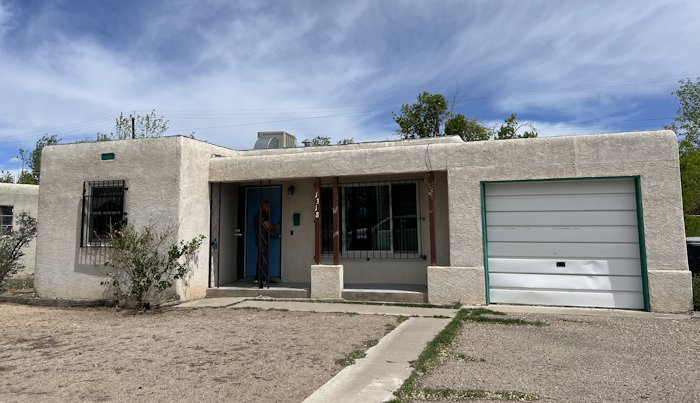
Lath and stucco house seems in good shape.
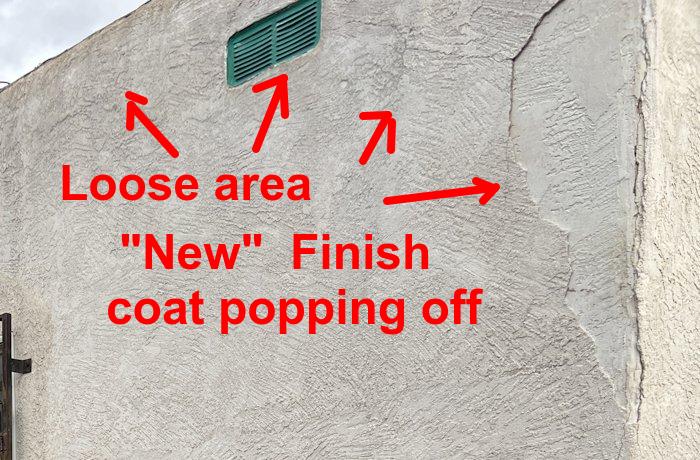
The house was re-coated with a new finish coat in the past, and the recoat is failing. Color finish doesn't bond the a color finish without a bonder. Note the wall is coming loose near the top. Stucco on the parapet is horizontal, and water infiltration is accelerating the deterioration. The wall will eventually fail anyway. A coping at the top to cover the edge of the stucco would ruin that cool New Mexico parapet look.
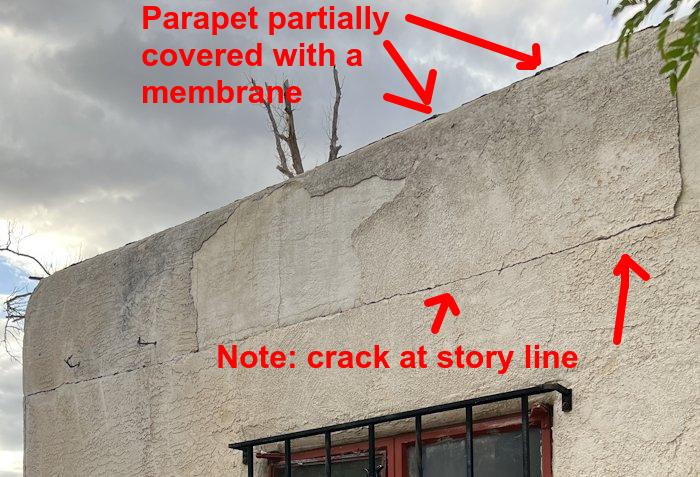
Another observation is that the parapet is partially covered with a rubber membrane which at least prevents water from running into the house. The old stucco may have been painted with a paint on bonding agent like weld crete. Weld crete will usually fail over time. You may have seen what I said about a one coat wonder with weld crete. Finish mortar without a basecoat usually isn't very hard. A basecoat underneath makes the finish mortar denser and harder. This finish without a basecoat is not only weaker, but the soft mortar is more like a sponge, and absorbs water more rapidly.
The crack at the story line may always come back through a re stucco. This comes from where the wood framing is built up higher on one side of the house for drainage for the flat roof. This may be something you need to live with and is normal on wood frame houses with a flat roof, like Spanish Colonial houses.
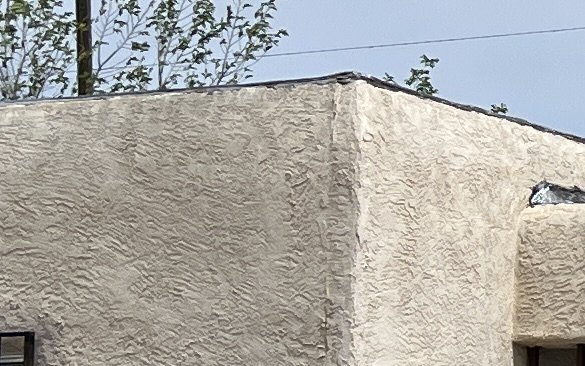
Another view of the parapet.
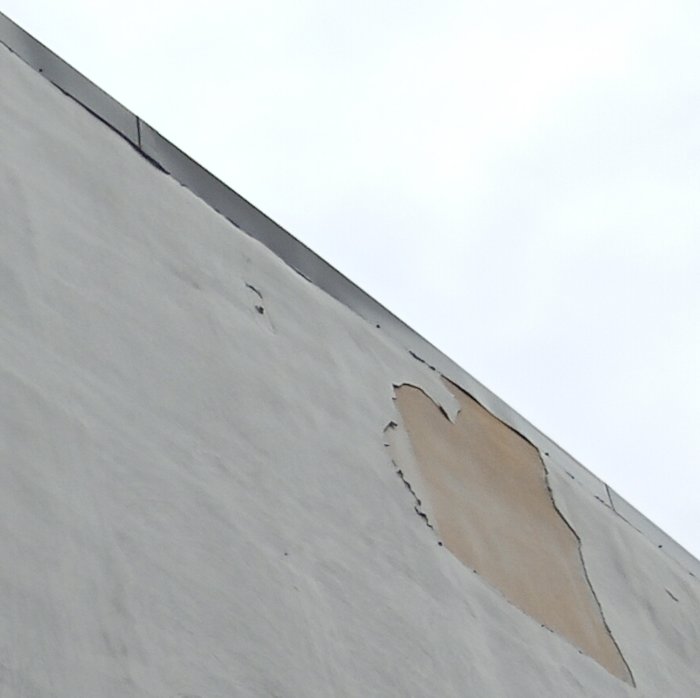
Here is a wall in the Georgetown area of Washington, DC. The same thing is happening. The wall was restuccoed with a layer about a half inch thick that is popping off. The new layer of stucco is out past the coping. The coping should have been extended to cover the edge of the stucco. It doesn't matter much, because the new layer didn't permanently bond and is coming loose anyway.
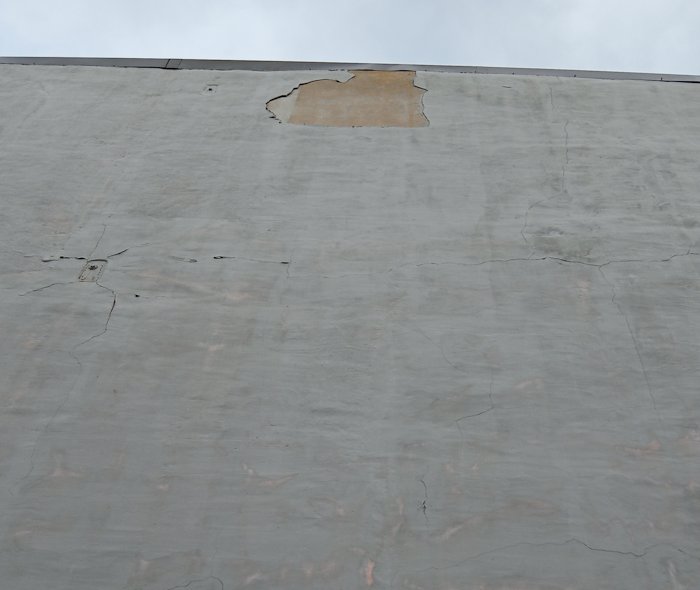
This entire three story wall is loose and is a time bomb waiting to go off. I guess they didn't read what I had to say about bonding stucco and plaster.
My chipping and bonding method would be an excellent solution for your house. I hope contractors will adopt this method as a permanent solution, providing the wall underneath is solid
Tearing off the old lath and stucco seems extreme. Tearing off the old stucco also would require reworking the roof, probable damage to the wood trim, a lot more painting and landscaping, and other expenses.
Here is a good example of my chipping and bonding method: Stucco over painted stucco and parging. Note when we chipped up the old wall it knocked off the loose mortar. Also the chips are deep enough to key deep into the old stucco. A bonding admixture is an adhesive providing a durable and permanent bond. We first put on a thin bonding basecoat. We also use acrylic bonders in the finish coat.
La Habra "Southern moss" was a beautiful color. It weathered nicely and had a old fashioned patina. Here is a link to a house we did with Southern Moss. I got a lot of work from people who saw this house. My late wife made the mold for the medallions from an old salad bowl.
Thanks so much for visiting my site and the question !!